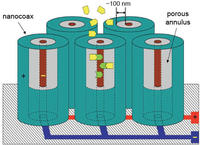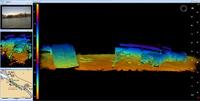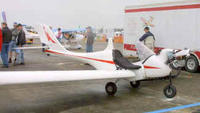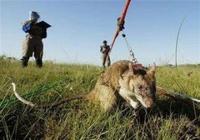-
Los Alamos lab responds to radiological incident

The Los Alamos National Laboratory said it is investigating the inadvertent spread of Technetium 99 by employees and contractors at the Lujan Neutron Scattering Center at the Los Alamos Neutron Science Center (LANSCE), a multidisciplinary accelerator facility used for both civilian and national security research; multiple tests indicate no health risks to public or employees
-
-
Near-instantaneous DNA analysis
Polymerase chain reaction (PCR) is an indispensible technique allowing researchers and clinicians to produce millions of copies from a single piece of DNA or RNA for use in genome sequencing, gene analysis, inheritable disease diagnosis, paternity testing, forensic identification, and the detection of infectious diseases; PCR for point-of-care, emergency-response, or widespread monitoring applications needs to be very fast — on the order of a few minutes; this has now been achieved
-
-
Antibiotic residues in sausage meat may promote pathogen survival

Antibiotic residues in uncured pepperoni or salami meat are potent enough to weaken helpful bacteria that processors add to acidify the sausage to make it safe for consumption; sausage manufacturers commonly inoculate sausage meat with lactic-acid-producing bacteria; by killing the bacteria that produce lactic acid, antibiotic residues can allow pathogenic bacteria to proliferate
-
-
DHS using Boston subway system to test new sensors for biological agents

Bioterrorism is nothing new, and although medicines have made the world a safer place against a myriad of old scourges both natural and manmade, it still remains all too easy today to uncork a dangerous cloud of germs; DHS’s Science and Technology Directorate (DHS S&T) has scheduled a series of tests in the Boston subways to measure the real-world performance of new sensors recently developed to detect biological agents
-
-
Glass offers a better way of storing U.K. nuclear waste

Researchers have shown, for the first time, that a method of storing nuclear waste normally used only for High Level Waste (HLW) could provide a safer, more efficient, and potentially cheaper solution for the storage and ultimate disposal of Intermediate Level Waste (ILW)
-
-
Electronic nose detects airborne toxins down to the parts per billion level
Research create an electronic nose device with applications in agriculture, industry, homeland security, and the military; the device can detect small quantities of harmful airborne substances
-
-
Invasion at “Fort Knox of Uranium” raises security concerns

The Y-12 National Security Complex in Oak Ridge, Tennessee, is regarded asthe Fort Knox of Uranium, so the fact that three anti-nuclear activists, one of them an 82-year old nun, were able to breach the high-security complex’s protective fences is not reassuring; that they did so using nothing more than bolt cutters, after announcing their arrival from half-a-mile away, and that they could stay, undetected, in a highly secure area on the nuclear complex’s ground for two hours, is even more worrisome
-
-
Y-12 and operator error
Three anti-nuclear activists, led by an 82-year old nun, breached the perimeter security system of the supposedly highly secure Y-2 nuclear facility at Oak Ridge, Tennessee, where nuclear weapons components are manufactured (note that the Oak Ridge National Laboratory [ONRL] is not affiliated with the Y-12 National Security Complex); they then spent several hours in a secure area of the facility, leisurely spray-painting slogans on the facility’s walls – without the facility’s security staff, or the sophisticated $500 million security cameras and sensors, detecting them; to understand what happened at Y-2, we must accept that operator error is an essential problem in national security, and that the problem is pervasive and normal; the only way to deal with the operator error phenomenon is to build redundancies into the system
-
-
Long Beach Police Department purchases underwater inspection system for port

The Port of Long Beach is the second busiest seaport in the United States and is a major gateway for trade with Asia, handling more than six million containers annually; to enhance port security, the City of Long Beach Police Department has purchased an Underwater Inspection System (UIS) from Cod Octopus
-
-
New device dismantles pipe bombs safely, preserving forensic evidence
Thousands of pipe bombs are made each year, and thousands of pipe bomb threats are called into local police and FBI authorities across the country; many are false alarms, but those that are not can be deadly; dismantling a pipe bomb is tricky and serious business, and missteps during the dismantling process can produce catastrophic results
-
-
New technology combats global pandemic of drug counterfeiting
Drug counterfeiting is so common in some developing countries – in some studies, 50 percent of the drug samples from Southeast Asia have been counterfeit — that patients with serious diseases are at risk of getting a poor-quality drug instead of one with ingredients that really treat their illness
-
-
Remote monitoring market exceeds $29 billion in 2011
A new reports says that the world market for remote monitoring services was worth more than $29 billion in 2011, equivalent to $2.4 billion in recurring monthly revenues (RMR) across the year; the report also estimated that, in the same year, 54 million accounts, or customer locations, were provided with services
-
-
DHS seeks better ways to detect ultra light aircrafts used by smugglers

As the war on drugs continues with every sunrise and sunset, DHS has awarded a contract just short of $100 million for a specialized system which will be able to detect ultralight aircrafts which are used to smuggle drugs across the border
-
-
Lifelike, cost-effective robotic hand disables IEDs
Researchers at Sandia National Laboratories have developed a cost-effective robotic hand that can be used in disarming improvised explosive devices, or IEDs; the Sandia Hand addresses challenges which have prevented widespread adoption of other robotic hands, such as cost, durability, dexterity, and modularity
-
-
U.S. Army trains rats in explosives detection

Landmines kill between 15,000 and 20,000 people a year, and continue to kill adults and children decades after a conflict ends; the U.S. Department of Defense currently relies on dogs as the animal of choice for explosives detection, but Pentagon researchers want to see whether rats can be trained to do the job; rats are smaller so they can search smaller spaces than a dog can, and are easier to transport
-
More headlines
The long view
Keeping the Lights on with Nuclear Waste: Radiochemistry Transforms Nuclear Waste into Strategic Materials
How UNLV radiochemistry is pioneering the future of energy in the Southwest by salvaging strategic materials from nuclear dumps –and making it safe.
Model Predicts Long-Term Effects of Nuclear Waste on Underground Disposal Systems
The simulations matched results from an underground lab experiment in Switzerland, suggesting modeling could be used to validate the safety of nuclear disposal sites.
